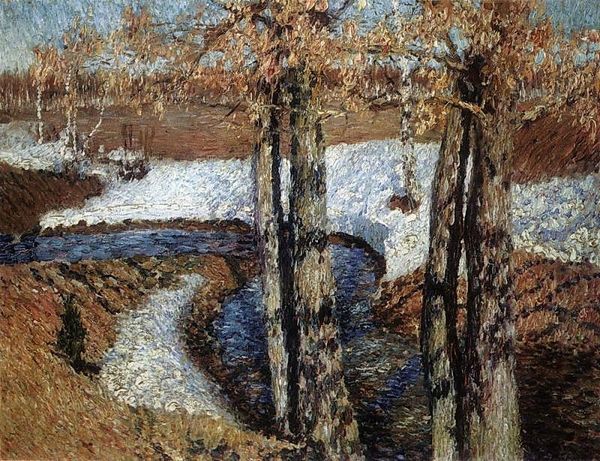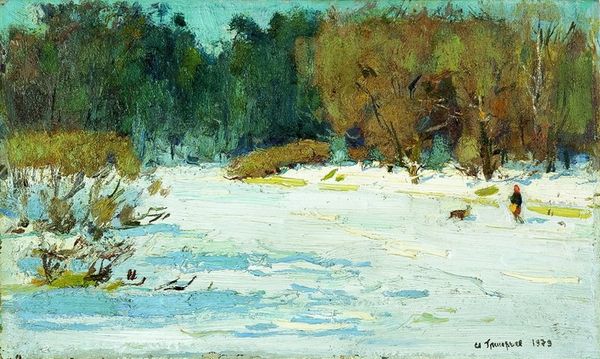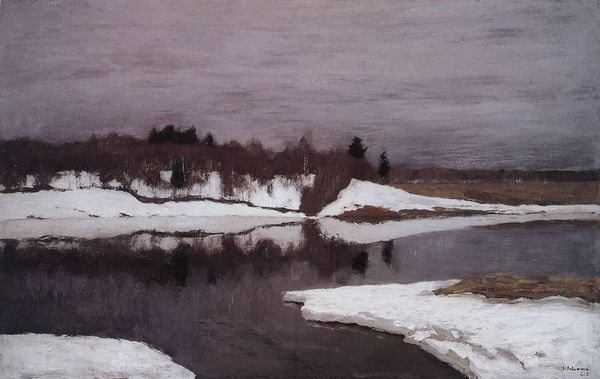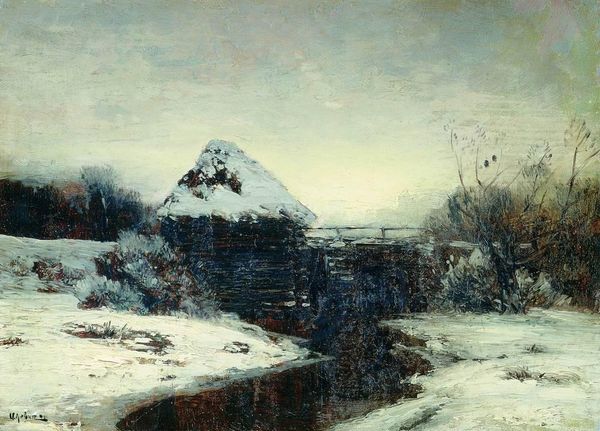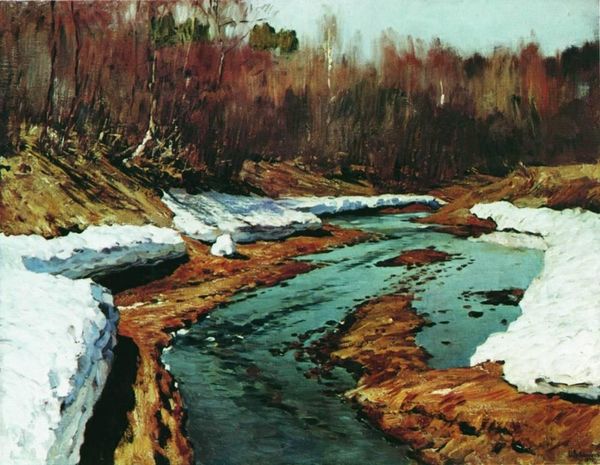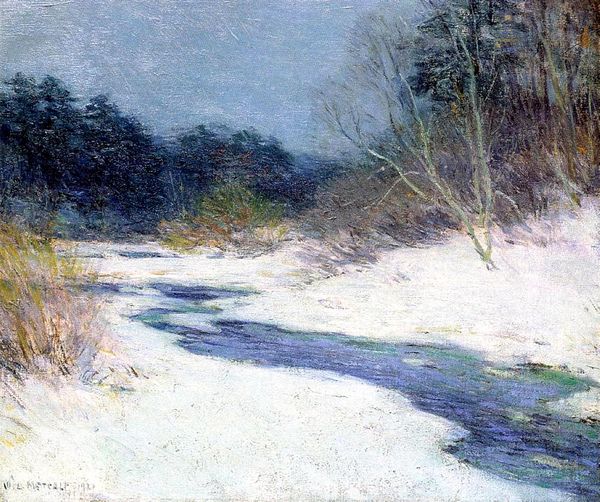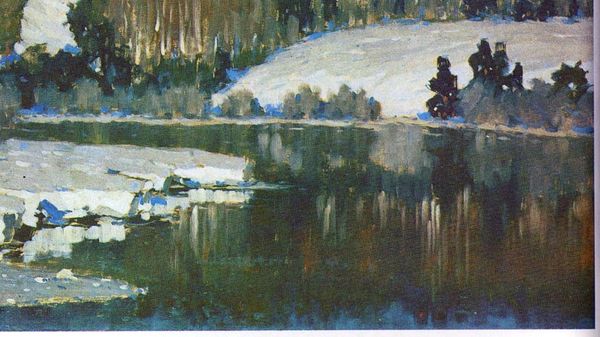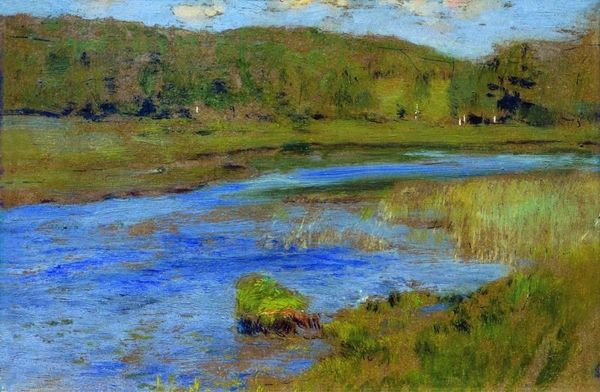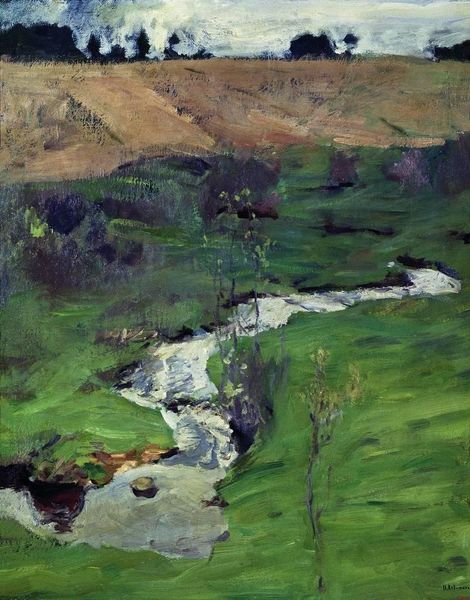
Copyright: Public domain
Editor: Here we have Isaac Levitan's "The Last Snow. Village Savvinskaya," created in 1884 using oil paint. It feels incredibly still, doesn't it? What strikes you about this painting? Curator: Levitan painted this scene during a period of increasing social awareness among Russian artists. They moved away from purely aesthetic concerns and towards representing the realities of Russian life. What does this thawing landscape suggest to you about Russian society at that time? Editor: Perhaps a society also thawing, leaving behind a rigid past? Curator: Precisely. Notice how the village buildings are rendered with a muted palette, almost blending into the background. What do you think is being emphasized through this contrast between the melting snow and the rustic architecture? Editor: The persistence of the old ways against the inevitability of change? Maybe that’s too simplistic. Curator: It is tempting to look for overt symbolism, but it is also crucial to understand that artists like Levitan were also responding to the development of impressionism and its focus on capturing a fleeting moment and the sensations of light and atmosphere. Does knowing that shift your perspective? Editor: Definitely. I see it less as a grand political statement and more as a meditation on the quiet, almost melancholic beauty of a transitional season and its reflection in rural Russia. I see now how his painting engages with evolving artistic styles and sociopolitical contexts. Curator: And, as we discussed, the very act of representing rural Russia was a politically charged act at this moment in history. Hopefully, this discussion has enriched your viewing of "The Last Snow" in relation to both art history and Russian society.
Comments
No comments
Be the first to comment and join the conversation on the ultimate creative platform.
